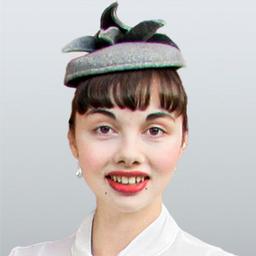Some great artistic masters have become so revered that their reputations impress those who know very little about their work. Still, these masters were mere human beings who went through periods of growth, struggles, and transformations that deeply affected their work.
With classical music, music critics and historians often study and form opinions on the evolution a body of composers’ works. They perceive improvements as the artists gained experience, maturity, and prestige. As a result, early compositions are often overlooked or excluded from the rest of his catalogue, because they are considered immature compared to later works of genius.

An Opera Competition
Puccini concluded his formal musical studies at the Milano Conservatory in 1883. He'd spent three years studying composition under esteemed Italian composers Stefano Ronchetti-Monteviti, Amilcare Ponchielli, Amintore Galli, and Antonio Bazzini. Composing the orchestra piece “Capriccio sinfonico” was his thesis. Its performance was favorably reviewed in the press after it was publicly performed on July 14, 1883, and it established his reputation as a promising young composer.After this, Ponchielli, a successful opera composer, encouraged Puccini to write an opera. To help him along, Ponchielli invited him to stay at his villa while he worked on the piece. There, he introduced him to Ferdinando Fontana, a journalist, playwright, poet, and librettist of modest reputation. They decided to collaborate on what became Puccini’s first opera.

Puccini’s later works are noted for their realism and then-contemporary settings. He’s considered one of the main composers in the “verismo” school, which is Italian for “truth” or “reality.” However, this first work followed the time-honored operatic tradition of subject matter based on folk legends and the supernatural. Based on Jean-Baptiste Alphonse Karr’s short story “Les Willis,” the new opera was called “Le Villi,” which means “The Willis” or “The Fairies” in Italian.
Puccini entered “Le Villi” in the first of four musical competitions given by Casa Musicale Sonzogno. This competition was for new, unperformed one-act operas “inspired by the best traditions of Italian opera.” The work could be “idyllic, serious, or comic.” “Le Villi” included elements of all three of these elements. Puccini submitted his entry in December 1883 on the last possible day.
Although the judging panel included two of his teachers, Galli and Ponchielli, Puccini did not win. It has often been said that his manuscript was rejected because it was illegible. However, many refute this. It’s widely believed that Ponchielli purposely kept his student from winning because he suspected that the composition’s winner would remain obscure.
Instead of naming him winner, Ponchielli introduced Puccini to the prominent publisher Giulio Ricordi. Aided by the publishing house Casa Ricordi, “Le Villi” was first staged at the Teatro Dal Verme on May 31, 1884. It met with overwhelming success, was purchased and later published by Ricordi in a two-act format, and established Puccini as a gifted opera composer.

A Classic Story
“Le VillI” features only three soloist singers: soprano Anna, tenor Roberto, and baritone Guglielmo, plus a chorus of mountain folk, fairies, and unseen spirits. Puccini expanded it after the competition, but the full runtime is still only 64 minutes. This includes two acts of vocal music and an orchestral intermezzo. Both acts take place in a pleasant clearing in Germany’s Black Forest in an indeterminate time.Act 1 is a joyful celebration on a spring day as the mountain folk celebrate Anna and Roberto’s betrothal. Roberto is about to go to Magonzo (Mainz), Germany, to claim an inheritance.
Anna begs him not to leave, since she dreamed that she would die while waiting for him to return. Roberto assures her of his love. Then her father, the head forester, leads everyone in a prayer for Roberto’s safe return.
The audience never sees Roberto’s adventures in Magonzo. Rather, a narration (either printed in the program or read aloud during the performance) tells viewers that in the big city, he met a siren, who courtesan makes him forget Anna. The first musical piece of the Intermezzo, “L’Abbandono” (The Abandonment), is at Anna’s funeral, since she died from a broken heart.
After he leaves, Roberto enters. Left penniless by his temptress, he has returned home upon learning of Anna’s death. His cruel behavior haunts him as he recalls the happy days of his youth. Suddenly, the Villi surround him, joined by their newest member, Anna. She reminds him of his broken vows, but his remorse isn’t enough to save his life. The Villi lure him into their dance of death, and the opera ends as he falls lifeless at Anna’s feet.
“Le Villi” is unique among Puccini operas because it features dancing as well as singing. It was common practice in the early 19th-century for operas to feature dramatic ballet sequences conveying otherworldly characters, and Act 2 of “Le Villi” has all the characteristics of a “ballet blanc” (white ballet). These were Romantic era ballets about otherworldly female characters.
The first ballet blanc was in the 1831 opera “Robert le Diable.” The Giacomo Meyerbeer opera featured a group of ballerinas in ethereal white tutus who represented spirits returning from the dead to haunt the opera’s tenor. Interestingly, the European legends of the Villi which inspired this story also were the basis for the most famous ballet blanc, “Giselle.”
“Le Villi” was highly successful at its first premiere, yet it never became a standard repertoire staple. Its first and only production was at the Metropolitan Opera in 1908, when it was performed six times on a double bill with another one act opera, “Cavalleria Rusticana” by Pietro Mascagni.
Despite a prestigious cast, including Enrico Caruso, “Le Villi” wasn’t well-received. The only commonly excerpted piece from the opera is the Act 2 tenor aria, “Torna ai felici di.” While all three characters have beautiful arias, Roberto’s aria is the only piece of music performed in concerts and competitions.

The score is an interesting study. The vocal lines clearly indicate Puccini’s style and are comparable to those in his early masterpiece “La Boheme.” The Act 1 finale, a prayer for the lead trio with chorus accompaniment, was so popular at the first performance that it was reprised three times.
The villi’s sprightly themes are reminiscent of Felix Mendelssohn’s “A Midsummer Night’s Dream.” Another rarity about this score is that the chorus sings during two key dance sections. Typically, an opera with ballet features has a separate dance sequence with little to no singing.
Ballet and Folk Tradition
Perhaps another reason why this work is less popular than the composer’s other operas is its reliance on dancing. Although it wasn’t unheard of for operas to prominently feature ballet, the challenge with this work is that to present this story accurately, both the tenor and soprano must be able to dance. Anna joins the ballerina as a Villi, and Roberto lasts through a long sequence before being “danced to death.”
Simply because of its brevity, “Le Villi” isn’t as complex as Puccini’s later operas; it only features six pieces for the lead singers (three arias, two duets for Anna and Roberto, and the trio), plus two chorus songs. Nevertheless, within those few pieces, many powerful musical tools were employed, such as leitmotifs (a recurring theme for a character or concept), foreshadowing, and repeated musical phrases. In the Act 2 duet, Anna reprises Roberto’s lines from their earlier duet, condemning him with his own vows.

“Le Villi” may not have the nuance of Puccini’s later operas, but it does have beautiful music, dynamic characters, and powerful central themes. It was not only the beginning of a brilliant career but also a masterpiece that deserves to be rediscovered. It’s still performed occasionally by larger European companies, but there is no evidence of its having been performed at a major U.S. opera company since its Met debut in 1908.








